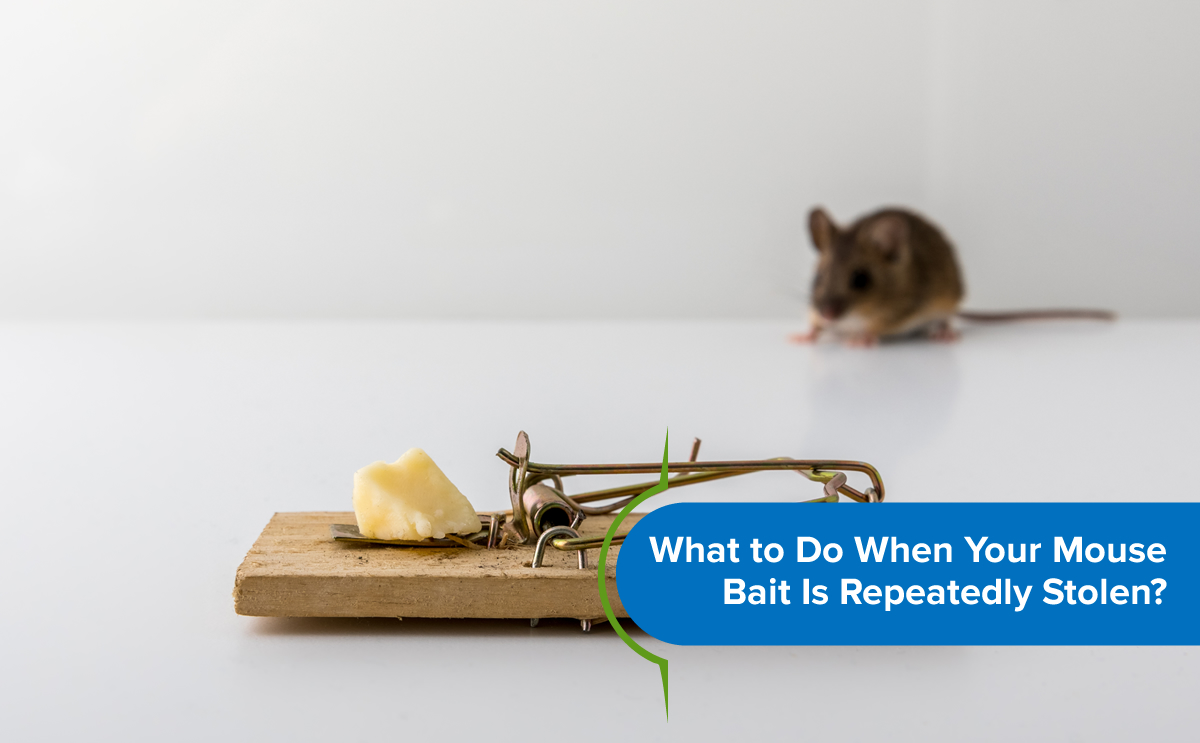- Pigeon Repellent Guide
- The Ultimate Guide to Bird Spikes
- The ultimate Guide on How to get rid of fruit flies
- Guide On How To Get Rid Of Flies Inside Your House
- How does steel wool for mice help safeguard your spaces?
- Everything you need to know about the mosquitoes | How to prevent them
- Which company is best for pest control ? How To Decide?
- What is rodent proofing and why do you need rodent proofing?
- Ultimate Guide to Get Rid Of Flying Insects UK
- Comprehensive Guide to Using Steel Wool for Mice Control
What to Do When Your Mouse Bait Is Repeatedly Stolen

What to Do When Your Mouse Bait Is Repeatedly Stolen?
Finding that your mouse bait keeps disappearing without any results can be frustrating. If mice are stealing the bait without triggering the trap, it means they’ve outsmarted your setup. Here’s what you can do to stop these clever critters from escaping with the goods.
1. Use the Right Bait
Mice are opportunistic eaters, but some baits work better than others. Instead of using dry bait that’s easy to grab and run, opt for sticky or soft bait such as:
- Peanut butter: A strong aroma attracts mice, and its sticky texture ensures they can’t quickly snatch and escape.
- Cheese spread: Unlike solid cheese, which mice can grab easily, spreadable cheese clings to surfaces, requiring them to linger longer.
- Marshmallows: Soft and sweet, marshmallows appeal to mice and can be slightly melted onto the trap to make removal difficult.
- Soft bread: Pressing small pieces of bread onto the trap ensures that mice must bite and pull, increasing the chances of triggering the mechanism.
These options require mice to stop and eat rather than quickly snatch and escape, increasing the likelihood of a successful capture.

2. Secure the Bait Properly
If the bait is loosely placed, mice can steal it without setting off the trap. To prevent this:
- Smear the bait onto the trigger plate: This makes it impossible for mice to take the bait without applying pressure.
- Use dental floss or a zip tie to attach solid bait: This prevents mice from simply grabbing and running.
- Press bait firmly onto the trap: Ensuring that the bait adheres properly forces the mice to struggle, increasing activation chances.
3. Adjust Trap Sensitivity
Some traps require too much force to activate. If your trap is not triggering:
- Lightly sand the trigger plate to increase sensitivity: This allows for even slight movements to set off the trap.
- Add a small weight to the trigger mechanism: This makes the trap more responsive to lighter mice.
- Test the trap with a light touch to ensure it’s set correctly: Ensuring the mechanism is functioning properly will prevent failed attempts.
4. Change Trap Placement
Mice follow set pathways along walls and hidden areas. If your trap is in an open space, try:
- Placing it along walls, corners, or near known entry points: Mice prefer moving along edges rather than exposed areas.
- Positioning multiple traps along their travel routes: Increasing the chances of interception.
- Using enclosed traps for a more confined setup: Mice feel safer entering small spaces, making them more likely to engage with the bait.

5. Switch to a Different Trap Type
If traditional snap traps aren’t working, consider:
- Electric traps: Deliver a quick, humane shock when mice enter, ensuring immediate extermination.
- Live catch traps: Useful for humane removal and relocation, allowing you to release mice far from your home.
- Glue traps: Effective but should be checked frequently to avoid prolonged suffering. Best used in conjunction with other methods.
6. Reduce Competition from Other Food Sources
Mice may ignore bait if they have access to other food. Make sure to:
- Store food in airtight containers: Prevent easy access to alternative food sources.
- Keep kitchen counters clean: Crumbs and spills attract mice and reduce their interest in baited traps.
- Seal trash bins tightly: Mice are scavengers and will find open trash bins as an easy food supply.
7. Set Multiple Traps
Increasing the number of traps boosts your chances of success. Try:
- Setting traps in pairs a few inches apart: If a mouse avoids one trap, it might fall into the second.
- Using different bait types to see what works best: Some mice may have preferences, so experimenting can increase effectiveness.
- Placing traps in multiple locations: Ensuring that high-traffic areas are covered improves capture rates.

8. Identify and Seal Entry Points
If you continue to have a mouse problem, rodent proofing at the source is a must and here is how you can do it:
- Sealing cracks and holes with steel wool or caulk: Mice can squeeze through tiny openings, so block every possible entry.
- Installing door sweeps and air brick covers: These prevent mice from slipping through gaps beneath doors and vents.
- Checking for gaps around pipes and wiring: These are common entry points that need sealing to ensure mice can’t find their way inside.
Final Thoughts
If your mouse bait keeps getting stolen, it’s time to rethink your strategy. Using sticky bait, securing it properly, adjusting trap sensitivity, and placing traps strategically can greatly improve your success rate. If the problem persists, consider professional pest control services to ensure a long-term solution.
